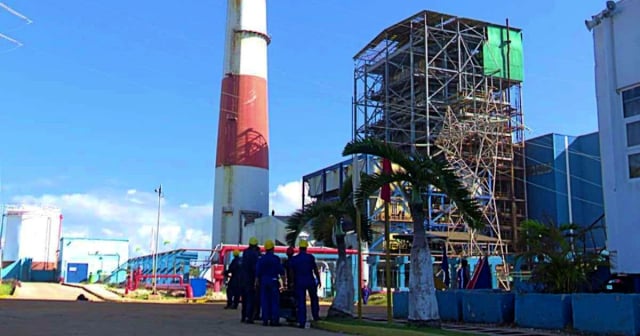Although the Antonio Guiteras Thermoelectric Power Plant in Matanzas managed to synchronize with the National Electric System just before midnight this Sunday, the forecast for blackouts in Cuba for this Monday remains extremely high, reaching 1,365 MW during peak hours.
This means that the synchronization to the national electrical grid of the largest thermal power plant in the country will not be felt too much for now; however, nine other thermal units remain out of service due to breakdowns and maintenance.
The peak impact this Sunday was 1,492 MW at 6:10 PM, coinciding with the time of highest demand.
The head of the National Cargo Office, Félix Estrada, stated in an interview with Cuban television that all the cargo was successfully delivered early Monday morning within a few hours.
However, although the supply was restored at 12:42 a.m., interruptions occurred again starting at 5:05 a.m.
At 7:00 a.m., the availability of the National Electric System (SEN) was 1,710 MW compared to a demand of 2,030 MW, resulting in a deficit of 396 MW.
During the day, the deficit is expected to reach 650 MW around noon.
As for the generation conditions, several thermal units are out of service.
There are five faulty thermoelectric units: unit 5 at the Mariel Thermoelectric Power Plant, unit 1 at the Santa Cruz Thermoelectric Power Plant, unit 5 at the Nuevitas Thermoelectric Power Plant, unit 3 at the Renté Thermoelectric Power Plant, and unit 2 at the Felton Thermoelectric Power Plant.
In addition, four other thermoelectric units are under maintenance: Unit 2 at the Santa Cruz power plant, Units 3 and 4 at the Cienfuegos power plant, and Unit 5 at the Renté power plant, which represents a limitation of 353 MW in thermal generation.
In distributed generation, 45 plants are out of service due to a lack of fuel, affecting 236 MW; this is in addition to 64 MW related to the Santiago de Cuba transfer, resulting in a total of 300 MW impacted by this issue.
In anticipation of peak hours, the entry of two engines into the power system of Santiago de Cuba is expected, contributing 25 MW; as well as the startup of Unit 3 at the Renté Thermoelectric Plant, with a capacity of 70 MW.
With these additions, a capacity of 1,805 MW is projected against an estimated maximum demand of 3,100 MW, resulting in a deficit of 1,295 MW.
In this context, a disruption of up to 1,365 MW is expected during peak consumption hours.
Filed under:
